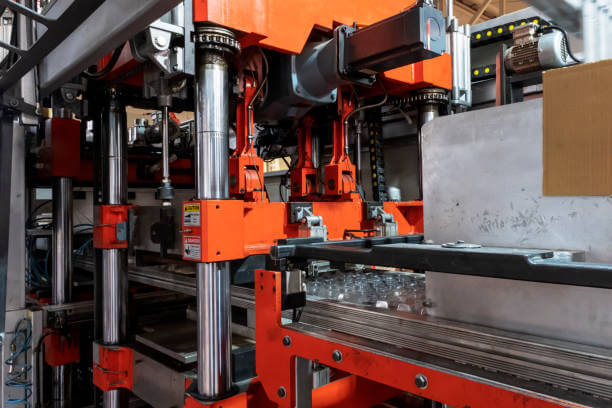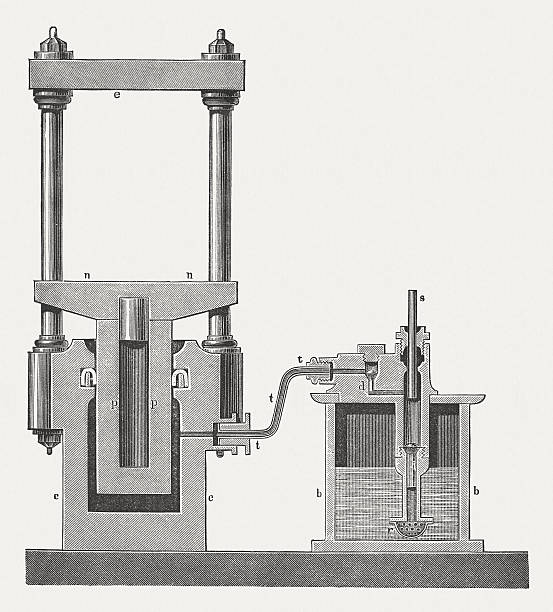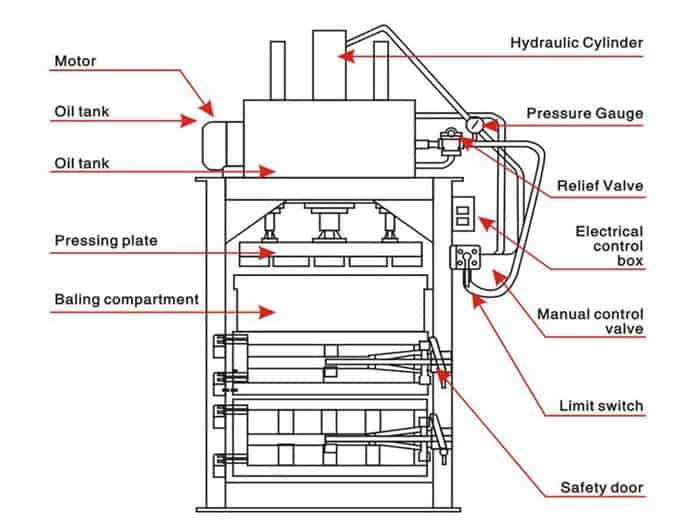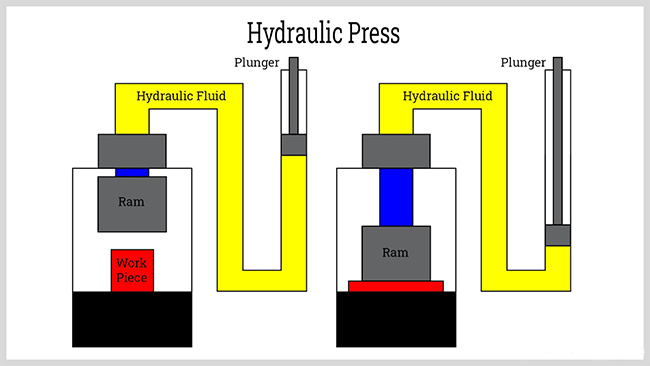Hydraulic press machines are widely used in industrial fields to efficiently perform heavy processing tasks.
With the application of a small force, the closed liquid in the hydraulic cylinder generates a large compression force.
The hydraulic press machine was invented by Joseph Bramah in 1795 and uses a hydraulic lever instead of a mechanical lever.
It features adjustable die space, stroke length, and applied pressure.
These machines can be used to process a variety of materials including metal, plastic, wood, rubber, and others.
Applications include metal forming, molding, bending, forging, sheet drawing, cold extrusion, straightening, flanging, stamping, and powder metallurgy.
The hydraulic press machine is commonly used in the manufacturing of electrical appliances, automobile parts, rails, knives, and aircraft.
This article provides a comprehensive overview of the definition, history, components, types, working principles, and applications of hydraulic press machines.

What Is A Hydraulic Press Machine?
A hydraulic press machine is a type of machine that utilizes hydraulic fluid to generate a compressive force.
It is mainly composed of a frame, base, power system, and control system.
The hydraulic press machine is mainly driven by a hydraulic cylinder and operates based on Pascal's law.
In the hydraulic press machine, the piston exerts pressure on the fluid, which in turn generates a mechanical force.
The pressure generated by the piston is uniformly transmitted to all directions within the confined liquid, resulting in a uniform and smooth force being applied to the ram.
The hydraulic press machine is widely used in the industrial field for metal forming, straightening, and crushing.
It can generate a high tonnage of up to 10000 tons and is commonly used for pressing materials together or apart, forming metal parts, and bending and straightening materials.
The hydraulic press machine operates based on Pascal's law, which states that the pressure at any point in the fluid is equal in all directions.
History of Hydraulic Press Machine

Hydraulic technology has a rich history spanning thousands of years, and it focuses on fluid flow and control.
It wasn't until the 18th century that the English inventor Joseph Brahma created the hydraulic press.
He developed the hydraulic press machine based on Pascal's principle.
Interestingly, he also invented the toilet, which has greatly improved our daily lives.
In its early days, the hydraulic press machine-generated pressing force through a basic hydraulic cylinder.
Today, the hydraulic press machine has been upgraded and is widely used in various industries, agriculture, and other fields.
A hydraulic press machine can be selected to fit specific processes, materials, and scenarios.
Main Parts of Hydraulic Press Machine

The basic structure of a hydraulic press machine consists of a frame, a working table, and a ram.
The hydraulic cylinder serves as the machine's power source and is made up of a piston rod and the ram.
The hydraulic cylinder transforms the hydraulic system's fluid power into kinetic energy, which drives the ram.
Oil is stored in an oil tank and is connected to the hydraulic cylinder's piston rod through pipes.
When the hydraulic oil is transmitted to the piston rod, the hydraulic cylinder creates pressure to drive the ram and process the material.
The hydraulic press machine uses a motor to power the oil pump, which converts mechanical force into pressure.
A limit switch is used to adjust the height and thickness of the processed material, as well as to control the pressure applied to the workpiece by maintaining a set gap between the platens.
The machine's relief valve releases any excess pressure in the pressed metal plate.
The manual control valve allows for adjustment of the pressure applied by the slider on the workpiece.
Finally, the electrical box controls the switches and joysticks of the machine through wiring and circuit connections.
How Does A Hydraulic Press Machine Works?

The hydraulic press machine operates based on the Pascal principle. It is composed of a hydraulic system including a hydraulic cylinder, piston, and hydraulic pipes.
This system typically has two hydraulic cylinders filled with hydraulic oil. The oil is typically stored in smaller servo cylinders.
Pressure is generated when the piston connects with the servo cylinder, causing the hydraulic oil to flow into the larger hydraulic cylinder through the hydraulic pipe.
The pressure applied to the larger cylinder and piston pushes the hydraulic oil back to the servo cylinder.
The force generated by the servo-hydraulic cylinder transfers to the hydraulic oil and results in a large force exerted by the master cylinder.
The hydraulic system and ram then press, bend and form the materials.
Although there are various types of hydraulic press machines, their working principles are similar.
The hydraulic pump provides power to the machine, and the pressure and power of the hydraulic press can be adjusted by changing the type of pump used.
Pumps can be manual, pneumatic, or electric, with electric and pneumatic pumps able to generate a more uniform force.
When the pump starts, it pumps hydraulic oil into the hydraulic system, which then pressurizes.
Once the hydraulic oil enters the piston, it generates a large amount of pressure, driving the ram and punch to apply force to the workpiece.
The hydraulic press machine can generate a great deal of energy with minimal force.
Conclusion
The hydraulic press machine is a commonly used tool in the manufacturing industry and is often used in conjunction with other machines like a press brake and laser cutting machine.
Having an understanding of the working principles and different types of hydraulic press machines can aid in making an informed decision when choosing the right machine for your needs.
If you have any questions or need further information, please do not hesitate to reach out to us.
FAQs
What is an H frame hydraulic press machine?
An H-Frame Hydraulic Press is a machine with a distinctive H-frame structure, equipped with a pressure cylinder, pump, and movable support.
This type of hydraulic press is equipped with a manual pump and is commonly used for small-scale production.
What is a C-frame hydraulic press machine?
A C-Frame Hydraulic Press is designed with a C-shaped frame that offers better speed, accuracy, and guidance performance.
This type of hydraulic press is more portable and is commonly used for fixing and assembling parts, disassembling components, or bearing installations.
What is four column hydraulic press machine?
The Four-Column Hydraulic Press features two hydraulic cylinders and a central control system.
The pressure and compression speed of this hydraulic press are adjustable, and it also has a semi-automatic circulation function.
It's possible to adjust the blanking pressure and working pressure, and the four-column hydraulic press can exert a significant amount of force on the workpiece.
What is a roll-frame hydraulic press machine?
The Roll-Frame Hydraulic Press is specifically designed for installing bearings, gears, and pulleys on axles and rollers.
It can also be used for bearing calibration and pressing of shaft parts.
What is a straightening hydraulic press machine?
A Straightening Hydraulic Press is used to straighten straight shafts, plates, and large weldments.





